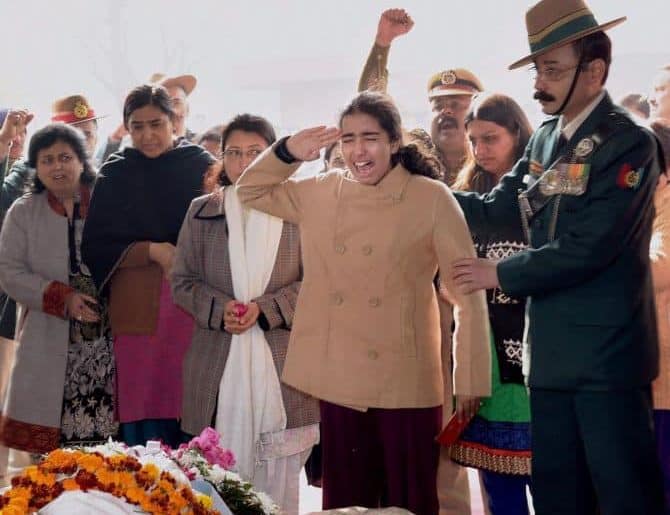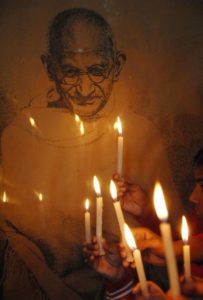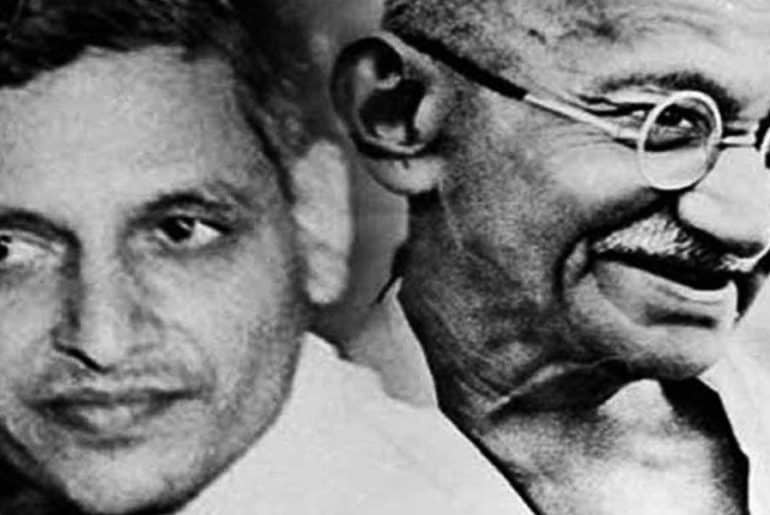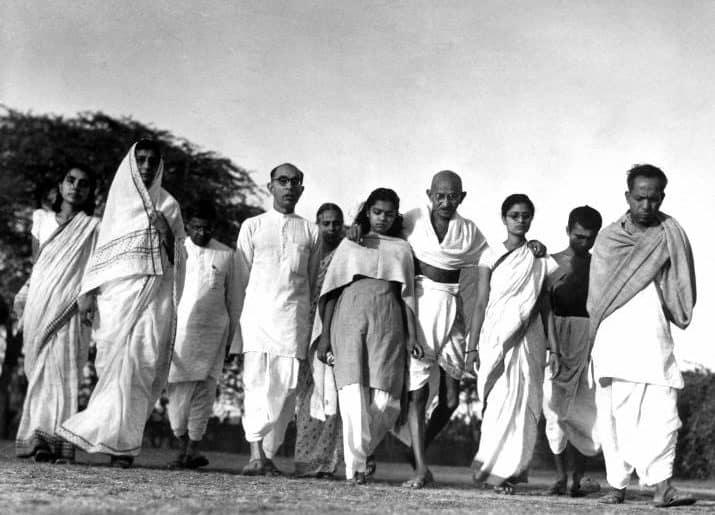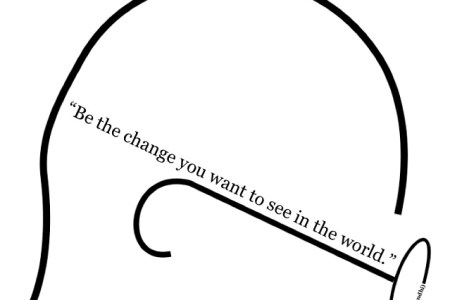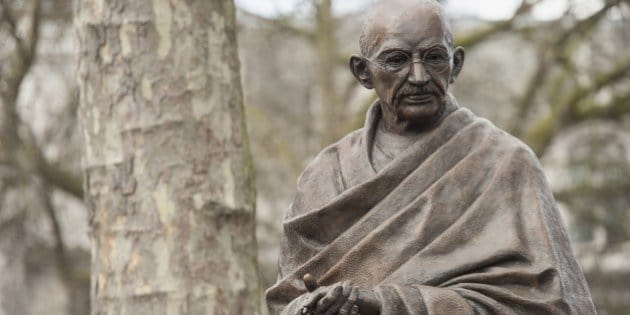Gandhi is introduced as a messiah of morals to a child. Stories of the three monkeys turning the other cheek and the celebratory personhood of ‘the father of the nation’ have cast him away from ideologies appreciated critically to a domain of morality concerning only the judgement of an immediate right or wrong; this domain is scary for it appeals widely but negates a deeper philosophical intervention or understanding of the figure, what he stood as, and why he appeals still.
The modern Indian liberal attitude of tolerance and non-violence draws heavily on the principles of the Mahatma—a politically potent image inflated with the task of disseminating a high moral cause. Gandhi advocated for a legitimacy of authority to be found in the conscience of man, extending to include a moral regeneration of the people. This emphasis on ‘regeneration’ comes from the idea of the moral decadence of Indian people that resulted in colonial enslavement, thus allowing British rule. His path to freedom is that of an enlightened anarchy.
This rejection of constitutionalism and parliamentary democracy for Gandhi doesn’t come from a Marxist critique of democracy, which nonetheless repulsed him for being anchored in violence and the denial of God. The British parliament to Gandhi is a ‘sterile woman’ for not having ‘done a single good thing’ and a ‘prostitute’ because ‘it is under the control of a minister who changes from time to time.’ Why then is this non-democratic father of the biggest democracy still revered and set as a principle?
This essay is not an attempt to demystify Gandhi or dissect his ideological perspectives, considering the mixed bag his thoughts were and the considerable changes they underwent. Neither does this discredit his contribution to the freedom struggle. It rather tries to frame Gandhi’s relevance in a post-colonial world.
In a country that prides itself on elevating demigods with cult followings seasonally who influence entire elections, run scandals, encroach on lands, are crime apologists, and turn tides over with their bhakts, the occurrence of the image of an academic Mahatma shouldn’t then feel very alien. This nation of ours produces ‘godmen’ that talk of the culture taught by the Vedas, the Upanishads, and the Gita and always desperately want to “go back to” and restore the lost. Their appeal to reason involves the acting on a soul force which carves out an existence replicating some past, further nudging us towards living a more perfect life in embodying this now realised historical truth. As ahistorical and pathetic as it sounds, it works when nationalism taints it and it appeals to a nation fraught with poverty, patriarchy, corruption, casteism, and obviously, the aftertaste of centuries of imperialist-colonialism.
The appeal for religion that comes strictly from the Hindu tradition and charms the upper caste consciousness, parading as spiritualism and distinguishing between good and bad Hinduism is a peak Mahatma move from Gandhi. For Gandhi, the acme of Hinduism is to be found in the Ramrajya. The rule of Ramrajya was a central element of his political philosophy and social vision for India; it stood as the manifestation of a philosophical anarchy that his ideas professed. The memory of that Ramrajya reverberates strongly today as one would see in the right-wing fundamentalist ruling state wanting to capitalise on vote banks using a similar analogy. Now, one doesn’t need to venture into the fraudulent concept of the Ramrajya and what it entails for minorities living in India. Such imagination of an ahistorical lofty state is in essence anti-equality, and attempts to extract the good from the fundamentally bad are attempts of deception. While there are Gandhian politicians/academicians who excessively differentiate Gandhi’s conception of an ideal state from the current trends, it only means that this idealism is confusing and largely interpretative while also being highly remunerative to talk about for the appeal it holds still after 77 years of independence.
This ascetic image of Gandhi is carried by the tokenistic ‘Mahatma.’ The deification of Gandhi, where he is seen as a saint who fasts, meditates, prays, abstains, and lives in an ashram while also providing a stage for people to opine regarding the role of women in public life, capitalism in a developing country, caste relations, the importance of import substitution, the significance of village life of family relationships and tradition, in general, work best in the Indian context. Our modernity isn’t too modern or radically progressive and always finds a place back to the religious to validate any step forward; all that is now scientific predates to a past where it has been discovered but apparently lost.
Gandhian philosophy is of spiritual passive resistance, which is a method of securing rights by personal suffering; it is the reverse of resistance by arms. It requires the use of soul-force over body-force. While the ambit of spirituality can be all encompassing (since it has no specific criteria of inclusion) and helpful, it detaches an individual from the product of a society and historical events. Injury to the self in resistance to the state still forms a criterion of recognizing a protest as valid and non-retaliatory. The figure of Gandhi emerges in resistance to the police while one defends and keeps defending their nature to be non-violent and peaceful. Violent attacks on the state, on the other hand, are deemed consequential and thus not acceptable, deserving a public trial of punishment.
While it is certainly true that the celebrityhood of Gandhi has been withering, his ideas and philosophies still haunt us. So long as we remain a nation obsessed with religion forming our politics and us conceiving moral Mahatmas in every sphere, the ghosts of Gandhi will long endure.
Read Also : Spinning Selfhood : The Story of Gandhi Bhawan, Delhi University
Image credits: Pinterest
Bhavana Bhaskar


